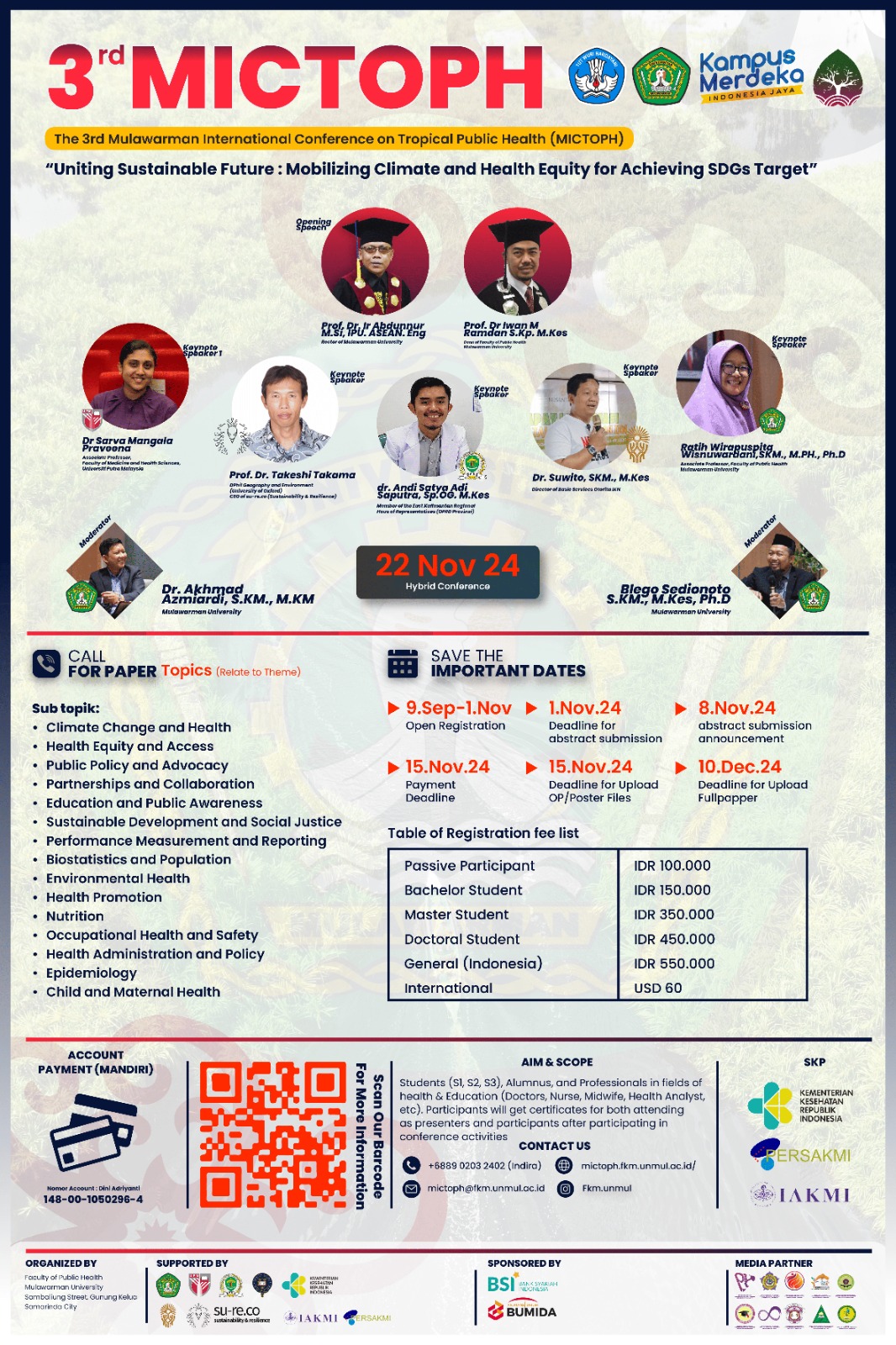The Complementary Feeding in Baru Tengah Balikpapan Contribute A Positif Correlation With Stunting
Keywords:
Complementary feeding, correlation, stuntingAbstract
Background : Stunting is the impaired growth and development that children experinece from poor nutrition, repeated infection and in adequate phsycososial stimulation. Based on Riskesdas 2018, the pervalence rate of stunting in Indonesia was recorded at 30,8 % baby in under five years old experiencing stunting. The pervalence in east Kalimanatan in 2022 is 22,39 %. Objective : This is a cross sectional study to find corelation between complementary feeding and stunting. : This study used a cross-sectional design to investigate the association between complementary feeding, smoke exposure, and immunization with stunting among children at Baru Tengah Primary Health Care, Balikpapan. Data were collected through questionnaires completed by parents, covering feeding practices, exposure to cigarette smoke, and immunization history. Stunting was assessed by measuring children’s height and comparing it to the WHO Child Growth Standards. The Chi-Square test was applied to analyze correlations between stunting and each variable Results : Using Chi-Square analysis, a significant relationship was found between stunting and complementary feeding practices (p-value= 0,001), but no correlation was observed with smoke exposure or immunization status (p-value > 0,05) Conclusion/Lesson Learned : Complementary feeding practices are associated with stunting. Regular counseling on appropriate complementary feeding should be prioritized for parents, especially when children reach six months of age, to reduce stunting risk.





